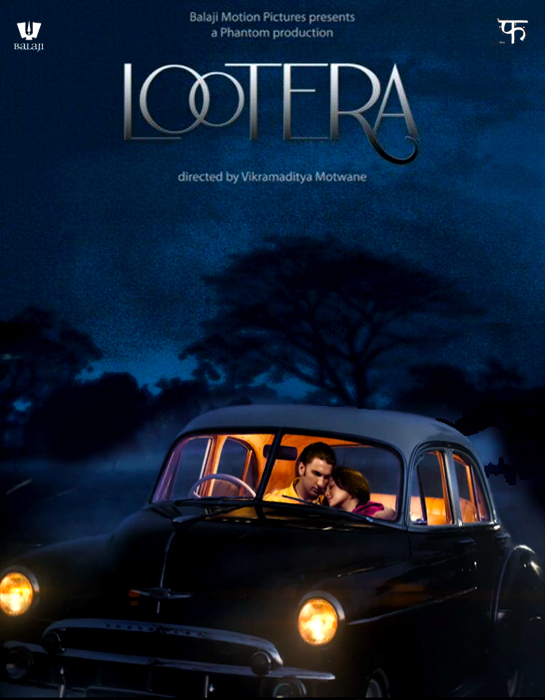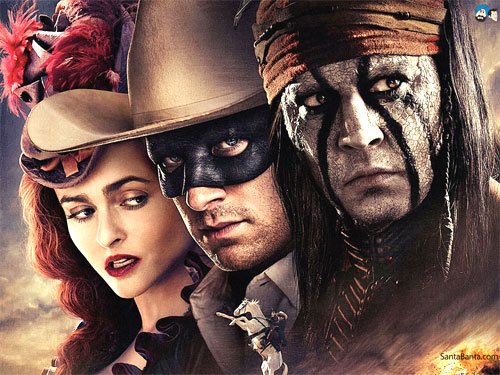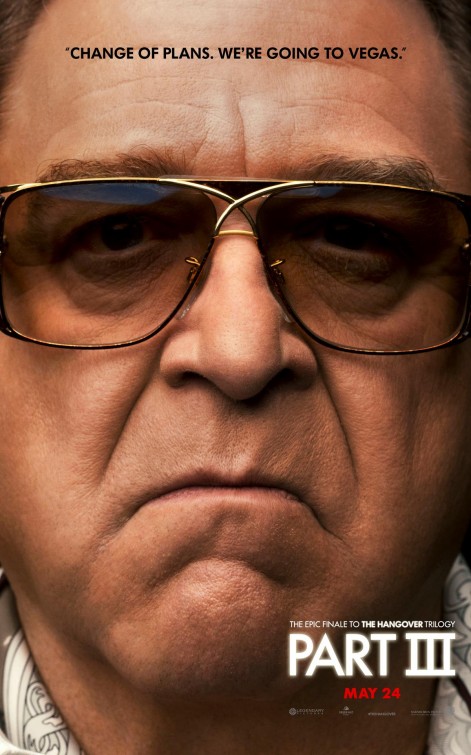Lootera | 2013 | Directed by Vikramaditya Motwane | Screenplay by Bhavani Iyer and Vikramaditya Motwane
[SPOILERS AHEAD]
Udaan was released a little less than three years ago (I seem to be obsessed with numbers today). VM already appears to be one of those auteurs who take their time to deliver. And boy does he deliver. Lootera is a treat.
I write this after this blog post at F.I.G.H.T C.L.U.B, which contains Vikramaditya Motwane’s very candid and supremely awesome responses to pertinent questions. RESPECT!
- Though it is perhaps still too early to gauge VM’s thematic inclinations, I’m going to try anyway:
- Stories within stories: VM has a story-fetish (I mean this in an entirely good way). Like Rohan in Udaan, Pakhi (Sonakshi Sinha) wants to be a writer. She delights in reading poetry aloud, and her father tells her a sweet bedtime story when she is sick. For Motwane’s characters, stories seem to offer both escape and reprieve. For the audience, it establishes a bond with the characters. We like stories and so do those people whose stories we’re watching.
- Rejection of patriarchal authority: In both Udaan and Lootera, the protagonists are trapped in lives that have been chosen for them by patriarchs. In Udaan, Rohan is forced to study engineering and work in his father’s factory. In Lootera, Varun (Ranveer Singh) is an orphan and a thief – we get a sense that this is a destiny chosen for him by his uncle. When Varun tries to ‘escape’ from this ‘prison,’ he dies (a classic noir trope).
- Period films are hard to come by in Indian cinema. Lootera is aware of this. Early on in the film, when Varun enters Pakhi’s world pretending to be an archaeologist, he tells her zamindar father that there is an old civilization buried around the house – he’s come to find it. Though this is a lie, it is an irresistibly resonant lie – ours are times when monuments fall to disrepair. I know I’m reading too much into a minor line, but I want to believe this was a conscious thing. Oh well.
- I’m more comfortable talking about the screenplay here because it’s co-written by the director. The screenplay’s strength lies in the economy of its dialogue – exposition is minimal, and I liked that. In times where voice-overs and flashbacks are the narrative norm, Lootera is a refreshing change. Humor lies in genuinely comic situations (like Varun’s attempt at painting a leaf) rather than slapstick gags. This strength, however, becomes a weakness when the economy is broken. Varun and Pakhi’s occasional emotional outbursts appear jarringly melodramatic and out of place. An example is the first act scene where Pakhi confronts Varun at the ‘archaeological site.’ It seems like it belongs in another film. For a second I thought they were aiming for a 50s tone, but I’d prefer not to go with that assumption because the tone is still inconsistent with the rest of the film. One wishes VM and Iyer had maintained their restraint.
- That said, the aspect that carries this film for its 143 minutes is undoubtedly its visual style. Cinematographer Mahendra Shetty finds ways to use minimalist, natural light in a manner that augments the action in any given scene. I expect one would be tempted to go with cozy yellows for a period narrative like this (especially the first half), but there are moments when he douses the frame in a soft, natural blue (I recall a scene in the library that used both soft yellow and a very natural blue/white to incredible effect). I’m sold. The first half is all doused in a cozy, understated elegance, the second half in a kind of raw and harsh white. Costume designer Subarna Ray Chaudhuri (whose credits include Parineeta) makes Shetty’s task much easier. The scenery chews the scenery.
- The staging of scenes is occasionally reminiscent of Udaan. Like the moment where Pakhi breaks down in her car, and the camera cuts to a wide shot of the car with the mustard field in the foreground – it’s a beautiful shot, but a visual setup very similar to that used in Udaan when Rohan bashes the shit out of daddy’s car.
- A key weakness for me was story. Though I’m the kind of viewer who is a sucker for visual style, the plot in general seemed laid out a little too simplistically – the Interval as usual forces a typical Indian 2 Act structure upon the narrative. First half – heist and fall in love. Second half – the Lootera is chased and love matures. I cannot express how frustrating this neat ‘splitting into two halves’ has become. Yeh Jawaani Hai Deewani, Raanjhanaa and now Lootera – just to name a few. I know it’s an industry norm, an imperative, but why? If a viewer likes the film, no amount of soporific fatty foods will keep him or her away. The problem is that it makes the plot immediately predictable. You can sense an intermission moment coming, and it’s maddening – a major turn or reversal has just occurred, and close-ups get closer up and the music rises to a crescendo. Lootera, unlike the other films I just mentioned, is even more predictable than the others because of a trailer that gave everything away, and its publicized incorporation of elements from The Last Leaf. The narrative lacked an element of surprise, and that is what usually keeps an audience hooked – what happens next? At no point did I feel surprised by something a character did, which is my only major grievance with this film.
- One surprise was how Lootera‘s plot, in very basic terms, mirrored that of Raanjhana (which had a more complex story, but fell short on other counts). Both films are about young men who destroy the lives of their loved ones, and then spend most of Act 2 fighting for forgiveness. Tea seems to be the peace offering of choice, which the women in both films dramatically reject. Both films have grooms abandon their brides on the day of the wedding.
- A powerful narrative element emerges from this comparison: one character’s future is almost completely in the hands of another. In Raanjhana, Kundan devotes himself to gaining Zoya’s forgiveness, and she has total control over what his fate should be. He dies. In Lootera, Pakhi can choose to give Varun up to the police, but she doesn’t. In Barfi! too, there is a memorable scene at the end when Shruti leads Barfi away from the special-care home, while Jhilmil calls out Barfi’s name. Barfi, of course, cannot hear her. It’s a moment where Shruti exercises total control over Barfi’s fate – if she so chooses, Barfi will never know that Jhilmil is around and Shruti will have Barfi all to herself.
- Divya Dutta is probably the most underutilized actress in Bollywood. She needs about 3 seconds on screen to make you cry along with her. There’s just never enough of her. Sonakshi Sinha and Ranveer Singh have probably found roles of a lifetime in VM’s hands.
- Re: the music, I felt they ought to have gone with an entirely 1950s-type score. Though Amit Trivedi and Amitabh Bhattacharya create a formidable team and the music is great in it’s own right – it is at times a bit excessive and tends to overpower the narrative. A scene when I felt assaulted by it was the scene when Pakhi and Varun kissed for the first time. Music tends to tell you how to feel. Don’t do that, Music?
I seem to have rambled on. Point is: it’s been more than 8 hours since I watched this film and I can’t get it out of my mind. It’s past 3 AM and I’m inspired enough to keep going on and on. It isn’t a great film, it isn’t a ‘masterpiece,’ but it is an important film in 2013 because it is different. And it’s VM’s second. And it’s stunning to behold.
Don’t miss it?














